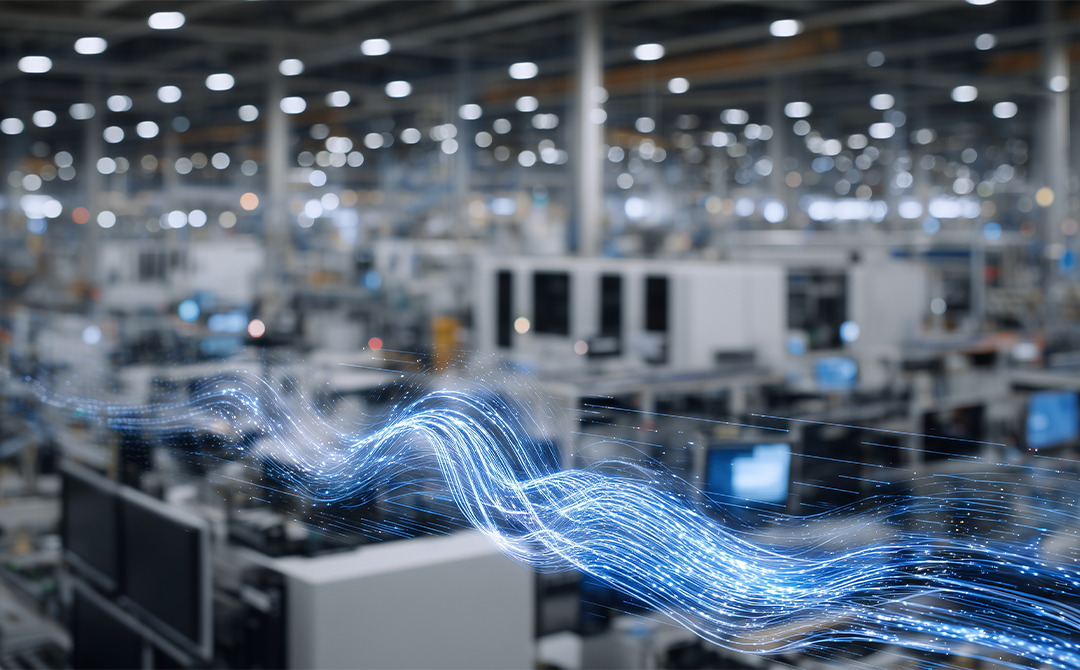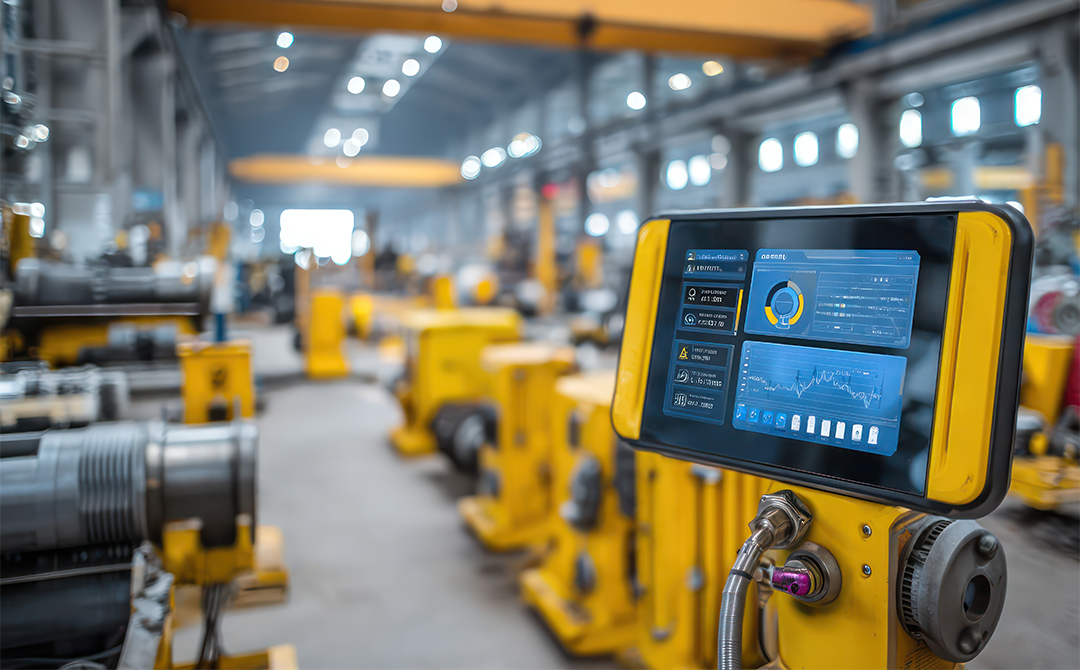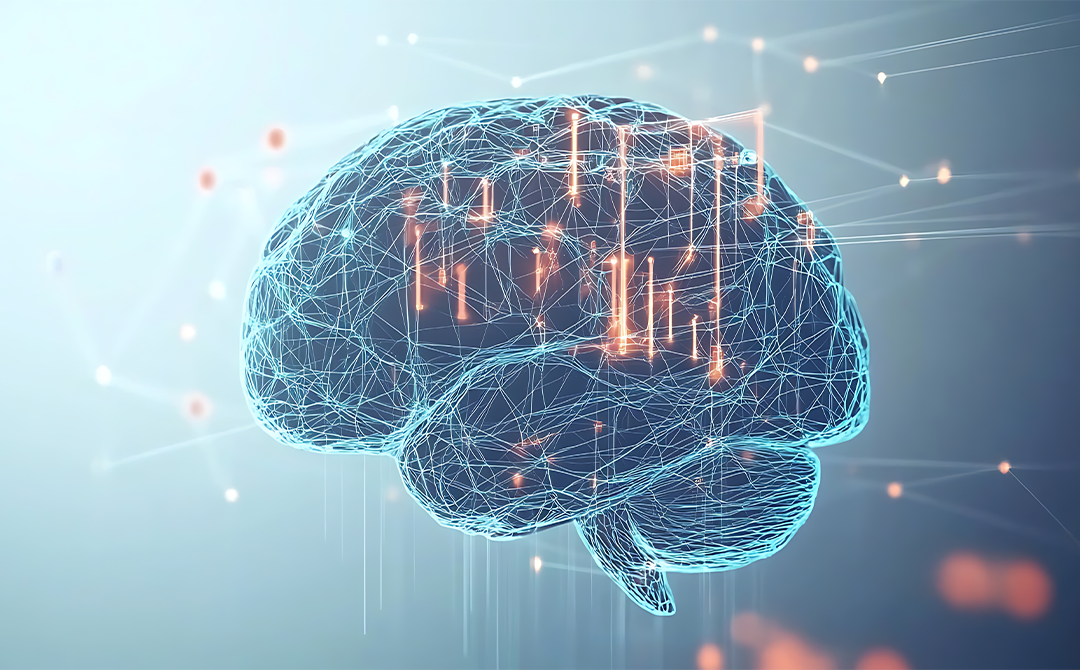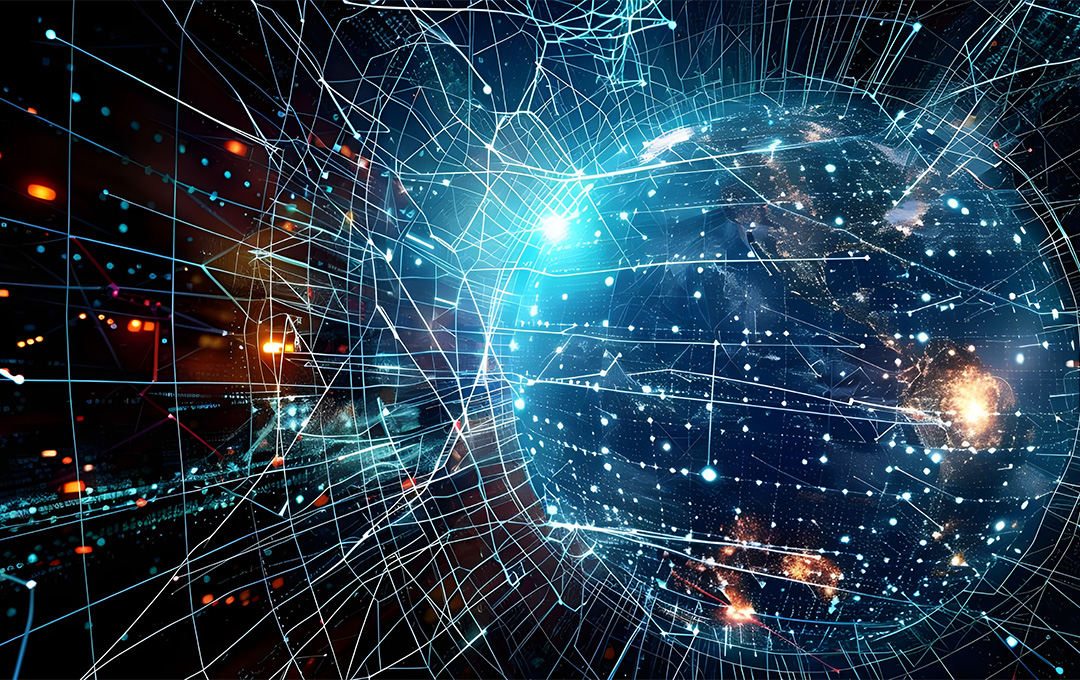
Ever since it broke through as mainstream tech, machine learning has advanced by m5 High-Impact TinyML in Action: Edge ML Use Cases Explainedajor leaps and bounds. Among its recent developments is one that stands to be the most significant. It is already generating quite a buzz and is registering a major uptick in industrial and enterprise-wide adoption.
But what is TinyML? It is when machine learning intelligence is brought to small and limited devices, letting them collect and process data without always depending on the cloud. This occurs at the edge, with edge being the stage where data is initially generated in devices ranging from factory machine sensors to smart home gadgets.
This ML model helps place machine learning models directly on microcontrollers and sensors, parts of industrial devices, which enables smart applications to operate with improved speed and efficiency. Some of its real-life applications include being able to help farmers monitor their crops to predict when factory machines need maintenance. This new landmark advancement in machine learning is finding effective uses across various industries.
To understand it better, let’s explore five real-world use cases that are influencing the future of edge computing.
Explaining TinyML and Its Role in Edge Computing Machine Learning
As mentioned before, tiny machine learning involves running edge ML algorithms on very small, energy-efficient devices like microcontrollers and simple sensors. Instead of sending data back and forth to the cloud, these devices can process information directly where it is generated. The place where it is generated is referred to as “edge” in this scenario.
The benefits of this approach become clear when we examine how data is typically handled in cloud systems vs how the embedded ML system improves it. Here’s how it happens typically:
- In cloud-based methods, sensors gather data and send it to servers.
- Then in the servers, large models process the information before sending it back to the device or user.
- Which then translates into actions or decisions (often completed manually).
But why does this process need an update? This cycle, unfortunately, consumes unnecessary amounts of energy, which can otherwise be saved for useful tasks. It also requires constant connectivity and can cause delays in situations that require immediate responses.
When you place intelligence closer to the data source, it completely changes this workflow. Here’s what an updated system would look like
- It will open up whole new avenues of monitoring and predicting in situations where bandwidth might be limited.
- It is extremely relevant to machine learning at the edge because it gives even the smallest devices the power to think and decide in real time without relying on external systems.
For businesses in some of the highest-stakes sectors, such as manufacturing, healthcare, agriculture, and environmental monitoring, this has the potential to drastically change how they design and deploy machine learning solutions.
What are the Fundamentals of TinyML?
This technology is best understood when you examine the main building blocks that allow the entire system to fit perfectly together. At its heart, its hardware runs microcontrollers, the “remote control” equivalent of essentially all tiny machine learning edge applications. These tiny integrated circuits can be as small as a postage stamp, but can execute simplified versions of advanced algorithms, making them an important, if not the most important, part of the ecosystem. And since they consume only a few milliwatts, they can run for a long time.
Since these devices have limited memory and processing power, optimization techniques play a vital role in making these models practical. Some of the most important methods include:
- Model compression helps in removing unnecessary parts of a neural network while still maintaining accuracy.
- Quantization is where the precision of numbers is reduced and used in calculations so that computations are faster and use less energy.
- Knowledge distillation is also used when a large model is used to train a smaller model that can deliver similar performance on tiny devices.
Other than hardware and optimization, certain frameworks form the backbone of TinyML development. The ecosystem has grown rapidly, giving engineers and even hobbyists many tools to build and deploy applications themselves.
- TensorFlow Lite for Microcontrollers is one of the most popular frameworks, made for devices with only a few kilobytes of memory.
- Edge Impulse is a full development environment that helps developers build and test tiny machine learning applications.
- PyTorch Mobile and other lightweight frameworks are some other examples of expanding the choices for deploying machine learning models on small devices.
- Kits for these come with preconfigured bundles of sensors, connectivity modules, and frameworks that make it easy to start experimenting with real-world applications.
What are the Key Benefits of TinyML
Industries are increasingly focusing on tiny machine learning because of its advantages over cloud-only methods. Here is a list of a few you must know.
|
Benefits |
Explanation |
Example Use Case |
|
Low Latency |
Computation happens directly on the device, enabling instant responses without relying on the cloud. This is important for applications where delays could have serious consequences. |
Medical monitoring, industrial automation, disaster detection |
|
Energy Efficiency |
These models run on microcontrollers that consume only a fraction of the energy used by traditional processors. Devices can last months or years on small batteries. |
Remote sensors in hard-to-reach areas with limited maintenance |
|
Offline Inference |
Devices do not require continuous internet connectivity, as analysis happens locally on the sensor itself. |
Farmers in rural areas are gaining insights without reliable connections |
|
Improved Privacy |
Sensitive information is processed locally, reducing exposure risks by avoiding data transfers across networks. |
Health data, operational metrics, and personal interactions remain secure. |
Case One (Real-Time Predictive Maintenance in Manufacturing)
What was the initial problem?
The most important one in the following list of examples is a solved one. A certain manufacturing facility in the US was facing costly disruptions whenever its machinery stopped working unexpectedly. While they always repaired and maintained their machines from time to time, the downtimes were always sudden and to their disadvantage during peak times.
Despite the traditional maintenance methods already in place, the problem persisted regardless. This led to an executive understanding that scheduled maintenance was not only inaccurate but was wasting resources by being implemented way too early. When not early, the fixes were reactive, typically happening only after damage was done, resulting in downtime and productivity loss.
How TinyML (& a Tredence Collaboration) Helped
Tiny machine learning changed this situation with smart, on-device monitoring. It enabled sensors built into industrial equipment to learn the normal vibration, temperature, and acoustic patterns of machines. When deviations occurred, the model processed and flagged down the potential issues immediately, without sending data to the cloud. It is one of many examples where Tredence worked to integrate advanced machine learning in edge cases.
Tredence brought this idea to life with our Edge AI platform. We started by closely integrating operational data systems with machine learning, thus enabling the easy deployment and management of the embedded models. Post deployment, it then went on to show clear improvements with the said manufacturing client experiencing:
- A 23% reduction in unplanned stoppages
- A 4% decrease in production costs
- 15% less scrap waste.
Case Two (Precision Agriculture and On-Node Crop Health Monitoring)
Actual Problem
Climate change is a major challenge for all of us, but particularly for farmers, it has been the toughest hit. They are experiencing the worst of the consequences. Their difficulties appear to be escalating due to the effects of climate change, like erratic weather patterns and increased crop failures. Cloud-based ML agriculture technologies require a stable internet connection at all times, which is frequently unreliable in rural regions. This is only preventing farmers from being able to utilize real-time data.
How TinyML Application Improves the Situation
In, in this case, can help sensors assess the conditions without needing any cloud help. Soil sensors equipped with this type of ML can read the moisture and nutrient levels in the soil immediately, cutting down manual inspection times by a huge margin. At the same time, cameras mounted on drones or field devices can detect pests or early signs of crop diseases without the need to transfer large amounts of data to the cloud first. These solutions have a shot at bettering crop yields, but most importantly, minimizing environmental impact.
Case Three (Wearable Health Monitoring and On-Device Anomaly Detection)
What is the Initial Problem?
Most wearable health devices transmit unprocessed data to cloud servers for evaluation, which is then sent back to the end user after a significant pause. This pause is what causes delays, and it also depletes the battery life of the wearable. Many users have also flagged this as a major privacy concern. For individuals who depend on immediate notifications, this delay can result in delayed reactions during critical health emergencies.
Here’s how TinyML Steps In
It has the capacity to change how wearables function by letting them act as smart devices that can analyze signals directly on the wrist or body. Like other scenarios, it eradicates the need to upload data to the cloud first. A smartwatch equipped with this technology can monitor ECG or SpO₂ at the point of care and promptly alert users to any irregularities. Fitness trackers are capable of classifying activities locally, providing immediate feedback without the need for external servers. This not only improves privacy but also prolongs battery life, eases cloud data congestion, and guarantees timely alerts, potentially saving lives.
Use Case Four (Smart Home and Consumer Electronics)
The Underlying Problem
Current smart home devices are significantly dependent on cloud processing for functionalities such as voice commands, gesture recognition, energy management, and almost every other thing they’re capable of. This reliance results in delays, poses risks to user privacy, and diminishes the reliability of devices when internet connectivity is poor.
The TinyML Use Case
It introduces intelligence directly into consumer devices. For instance, a voice-activated lighting system can immediately recognize voice commands without needing an internet connection. Whereas televisions, music systems, or gaming consoles can detect gestures without any help from the cloud. Energy management systems that utilize TinyML can monitor usage patterns and make immediate adjustments, thereby reducing energy waste and expenses.
Use Case Five (Environmental Monitoring and Disaster Early Warning)
The Problem (That is Going to Get Worse)
We have already talked about climate change and its environmental impact. It is only going to get worse with each passing year, a phenomenon we’re already witnessing in the form of widespread floods, famines, and wildfires. The current infrastructure for monitoring air quality or wildfires is costly and often too slow in scenarios where every second matters. Moreover, communities in remote or disaster-prone regions lack affordable systems that can help protect their lives and property.
The Use Case
It enables low-power-consuming devices to analyze conditions locally and act upon them in a few seconds. Air sensors, for instance, can detect toxic gases and warn communities before a mass casualty event occurs. Similarly, flood sensors can track rising water levels and predict overflow risks in low-lying areas, enabling quick evacuations before any loss of life. When it comes to serving in the forests, dedicated devices can sense unusual sounds or sudden temperature spikes that may signal cluster fires with the potential of turning into wildfires. The best thing about these systems is that they can run for long periods on small batteries and work even without internet connectivity.
|
Spotlight: While many organizations are still exploring the shift from cloud-heavy models to intelligent ML edge solutions, companies like Tredence are already showcasing the impact of both machine learning and edge cases in the Industrial context. We have gained hands-on experience in both and can vouch as experts in this field. Tredence developed a machine learning-based solution to automatically categorize products, improving operational efficiency and decision-making. This type of applied intelligence demonstrates how organizations can use ML not only for predictive maintenance but also for streamlining broader workflows in manufacturing and supply chains. It shows that the journey to tiny machine learning and edge-native intelligence builds on the same foundation of practical, business-driven machine learning. |
TinyML Compared with Traditional Cloud-Based Machine Learning
Here’s a direct comparison of how cloud-based machine learning works vs how tiny machine learning can improve it significantly.
|
Aspect |
Cloud-Based ML |
Tiny ML |
|
Model Size & Complexity |
Large models with high accuracy |
Limited in model size and complexity |
|
Connectivity |
Relies on connectivity |
Offline capability |
|
Response Time |
Often causes delays |
Immediate responses |
|
Energy Consumption |
Considerable energy consumption |
Energy savings |
|
Training & Insights |
Centralized processing |
Limited processing capability |
Challenges in Deploying TinyML
Despite its promise, deploying this machine learning model in particular comes with its own set of challenges. However, none of them are significant enough to cause major roadblocks.
- Model compression and optimization require expertise. In these processes, accuracy can’t be compromised in any way.
- Hardware limitations like low memory capacity and processing power can create roadblocks to what can be achieved. In 2025, hardware will make up the biggest share of the market at 57%, mainly because of the rise of specialized microcontrollers and edge devices designed. (Source)
- Enterprises also need to update their devices, which can sometimes be a bit challenging.
- Once thousands of sensors are already in the field, securely deploying tiny machine learning onto them might sometimes be complicated.
- After data labeling for training, these models can also be a barrier, especially in specialized fields like healthcare or environmental science, where there’s no progress without expert input.
Overcoming these challenges demands continuous development in both technology and organizational processes.
Best Practices for Building TinyML Applications
Organizations aiming to implement applications of this ML should first know what the best practices are.
- It is important to establish reliable data collection processes first to ensure models are trained with high-quality and relevant data only.
- Edge devices and the cloud should be synced to facilitate periodic updates and insights without straining networks.
- Continuous optimization is crucial. Developers should monitor model performance in real-world conditions and adjust just as needed.
- Security must be prioritized with authentication and safe update processes integrated into every deployment.
Simply by sticking to these practices, enterprises and agencies can ensure these use cases become actual, real-life solutions for them.
Integrating TinyML with Enterprise Ecosystems
For businesses, it does not operate alone. It should fit into broader systems that include MLOps, IoT platforms, analytics dashboards, and enterprise applications. IoT platforms have the tools that will help in managing devices, gathering data, and organizing updates as it gets implemented. Analytics dashboards are yet another important part that helps decision-makers in understanding insights and taking appropriate action.
TinyML and the Future of Edge Intelligence
It is making waves in home devices and distributed systems alike. Developers are embracing this form of machine learning for edge cases in a way that’s set to democratize model building and empower even non-experts to fine-tune tiny machine learning deployments. On the other hand, engineers are pioneering TinyLLMs that bring language model capabilities to constrained devices, letting natural language interfaces work even in remote areas. These converging trends point toward a future where intelligence does more than just reside in distant data centers but lives directly within our everyday devices. If you’re a budding business or an enterprise seeking a digital revamp, then Tredence can be your ultimate AI consulting partner and edge case ML experts. Contact us today and let’s make TinyML a reality for you.
FAQs
1. How does TinyML relate to edge computing machine learning?
It is a specialized form of machine learning made for ultra-low-power devices that operate directly at the network’s edge. While traditional edge AI often requires relatively powerful processors or GPUs, it pushes intelligence further down to microcontrollers and sensors with limited resources. This sets up data to be processed instantly where it is generated, instead of waiting for constant cloud connectivity.
2. Which hardware platforms support TinyML?
It runs smoothly on microcontrollers and specialized hardware designed for energy-efficient inference. Popular platforms include ARM Cortex-M series, Arduino boards, Raspberry Pi Pico, and Espressif ESP32 chips, which are widely used in IoT applications. Other than that, companies like Nordic Semiconductor, STMicroelectronics, and NXP provide hardware optimized for such workloads.
3. What are the leading TinyML frameworks?
Several frameworks let developers build and deploy TinyML models on resource-limited devices. The most widely adopted is TensorFlow Lite for Microcontrollers, which supports model optimization for low-power environments. Edge Impulse is another framework that provides a no-code to low-code platform that simplifies dataset collection and deployment for IoT devices. Other frameworks include uTensor, MicroTVM, and CMSIS-NN from ARM.
4. How can organizations measure ROI for TinyML projects?
Measuring ROI in these projects have both tangible and intangible benefits. Cost savings often stem from reduced cloud processing fees, lower data transmission costs, and extended battery life of devices. Productivity gains arise from faster, on-device decision-making and minimized downtime. One such example is predictive maintenance powered by this machine learning model that reduces expensive equipment failures. At the end of the day, understanding what TinyML is helps businesses understand their ROIs against their use cases.
5. What is the difference between Data Science vs Machine Learning, and where does TinyML fit in?
Any debate that gets into Data Science vs Machine Learning highlights that data science focuses on analyzing and interpreting data, while machine learning builds predictive models. It extends this by running those models directly on low-power edge devices, enabling real-time, local intelligence without relying solely on cloud computing.

AUTHOR - FOLLOW
Editorial Team
Tredence




